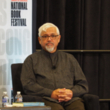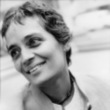The Light at the End of the World
(Libby/OverDrive eBook, Kindle)
Available Platforms
Description
Excerpt
Similar Titles From NoveList
Similar Authors From NoveList
Published Reviews
Booklist Review
Deb exquisitely blends India's past, present, and future in a brilliant, phantasmagoric pilgrimage across time, space, and dimension. Part One, "The City of Brume," centers on Bibi, a beleaguered former journalist now working for a consulting company who perseveres in the maelstrom of a digitally invasive autocracy. Summoned by a mysterious group, Bibi is asked to locate Sanjit, a former colleague accused of documenting and archiving horrifying, unimaginable government secrets. In oppressive and bleak surroundings, with ever-present paranoia and fear that she's being watched, Bibi sets out. The next three parts, "Claustropolis," "Paranoir," and "The Line of Faith," take place in 1984, 1947, and 1859, respectively, and all align with significant periods in India. In each, a character is on a quest rife with risk and in settings, like Bibi's, seemingly on the verge of anarchy or apocalypse. Bibi returns in "The Light at the End of the World," the last part, where she escalates her search for Sanjit, eventually arriving at the Andaman Islands. With clarity and purpose, Bibi ultimately fuses visions of the primordial past and uncharted future and, in a climactic, revelatory ascendance, finds truth. Combining elements of magical realism and Indian history and mythology, The Light at the End of the World is an imaginative, mind-bending reading experience.
Publisher's Weekly Review
Deb (The Beautiful and the Damned) returns after 12 years with an ambitious and phantasmagoric epic spanning two centuries of India's tumultuous history. In 1984 Bhopal, an assassin is assigned to shadow a suspected whistleblower at an American chemical plant, right before it explodes. Deb then flashes back to 1947, with India about to achieve independence, for the story of a Calcutta veterinary student who becomes involved with the mysterious "Committee" and its attempts to build an aircraft based on an ancient manual. Another jump takes readers to 1859, after the failed Sepoy Mutiny, when an English soldier follows his colonel into the Himalayas as part of an expedition to capture Magadh Rai, a fugitive mutineer. These stories are bookended by sections set in a near-future India, where a former journalist tries to track down an ex-colleague who has long been thought dead but might still be alive. All the stories have elements of the fantastic, not just in the near future with a chimeric figure known as the New Delhi Monkey Man, but in 1859 with a troop of automaton Sepoys. Like Gabriel Garcia Marquez, the author uses magic realism to shed new light on historical events. Filled with poetic imagery and dialogue, and subtle connections among the stories, this is a novel to get lost in. (May)
Library Journal Review
In his latest novel (following the International Dublin Literary Award long-listed An Outline of the Republic), Deb expertly compresses two centuries of India's history--and its future possibilities--into four sections and a coda. "City of Brume" is set in a pollution-ridden near-future, with former journalist Bibi maneuvered into seeking a radical journalist friend long vanished within a Hindu-nationalist security state. "Claustropolis: 1984" concerns an assassin following an operator at the Bhopal chemical plant, while "Paranoir: 1947" links a veterinarian student to a mysterious committee dreaming up a Vedic-inspired aircraft at the time of Partition. In "The Line of Faith: 1859," British soldiers track a fugitive leader in the wake of Sepoy rebellion and find something else entirely, while Bibi returns in a bittersweet coda that leaves readers wondering whether there is light at the end of the world. Abundantly and realistically detailed, yet spiked with fantastical elements from mysterious cellphone messages to a ticktock army, the four main sections are so rich and so freighted with ideas that each could stand alone as its own novel. Linking them serves to create a strong sense of life in India and a sink-into-it read for lovers of big books. VERDICT Highly recommended for readers interested in history, politics, and literary fiction.
Kirkus Book Review
An epic exploration of India's tumultuous history at four pivotal moments. Deb's ambitious third novel opens in a near-future India on the verge of collapse. The country's technological advances have led to the creation of a "superweapon," the threat of which has sparked violence across the country. Amid the chaos, a former journalist has been tasked with finding a former colleague who might be in possession of troubling government secrets. Flash backward to 1984, as a mercenary strives to track down a man who might be involved in a plot leading to the real-life Union Carbide disaster. Then further back to 1947, the year of Partition, as a veterinary student is on a search for a Vimana, a mythical airship. And finally back to 1859, as a British army officer is on an expedition to the Himalayan home of the White Mughal, leader of a rogue anti-colonial compound. There are common themes across the sections: a quest narrative, questions of how mysticism and the supernatural intersect with colonial and post-colonial realities, how "small wars stitch together the fabric of the future." Within each section, there's a lot to like, particularly in the 1984 section, which ably captures the sectarian divides following Indira Gandhi's assassination and the American imperialism of Union Carbide's presence, all wrapped around a pitch-black noir narrative. The near-future sections that bookend the novel are engagingly dystopian, blending cyberpunk's techno-skepticism with Pynchon-ian intrigue. And overall, Deb has accessed the omnivorous, madcap spirit of Midnight's Children--era Salman Rushdie. Still, there's little overt connective narrative tissue across the novel's four sections; Deb is aspiring for the kaleidoscopic, but the overall feel is of loosely related novellas. It's a visionary novel for sure but not a tight and cohesive one. A whip-smart if sprawling exploration of history and mythology. Copyright (c) Kirkus Reviews, used with permission.
Booklist Reviews
*Starred Review* Deb exquisitely blends India's past, present, and future in a brilliant, phantasmagoric pilgrimage across time, space, and dimension. Part One, "The City of Brume," centers on Bibi, a beleaguered former journalist now working for a consulting company who perseveres in the maelstrom of a digitally invasive autocracy. Summoned by a mysterious group, Bibi is asked to locate Sanjit, a former colleague accused of documenting and archiving horrifying, unimaginable government secrets. In oppressive and bleak surroundings, with ever-present paranoia and fear that she's being watched, Bibi sets out. The next three parts, "Claustropolis," "Paranoir," and "The Line of Faith," take place in 1984, 1947, and 1859, respectively, and all align with significant periods in India. In each, a character is on a quest rife with risk and in settings, like Bibi's, seemingly on the verge of anarchy or apocalypse. Bibi returns in "The Light at the End of the World," the last part, where she escalates her search for Sanjit, eventually arriving at the Andaman Islands. With clarity and purpose, Bibi ultimately fuses visions of the primordial past and uncharted future and, in a climactic, revelatory ascendance, finds truth. Combining elements of magical realism and Indian history and mythology, The Light at the End of the World is an imaginative, mind-bending reading experience. Copyright 2023 Booklist Reviews.
Library Journal Reviews
Author of the International Dublin long-listed An Outline of the Republic, Deb compresses two centuries of India's history and future possibilities into four main sections—the futuristic, pollution-beset "City of Brume," Bhopal-haunted "Claustropolis: 1984," Partition-set "Paranoir: 1947," and "The Line of Faith: 1859," with British soldiers seeking fugitives during the Sepoy Rebellion.
Copyright 2022 Library Journal.Publishers Weekly Reviews
Deb (The Beautiful and the Damned) returns after 12 years with an ambitious and phantasmagoric epic spanning two centuries of India's tumultuous history. In 1984 Bhopal, an assassin is assigned to shadow a suspected whistleblower at an American chemical plant, right before it explodes. Deb then flashes back to 1947, with India about to achieve independence, for the story of a Calcutta veterinary student who becomes involved with the mysterious "Committee" and its attempts to build an aircraft based on an ancient manual. Another jump takes readers to 1859, after the failed Sepoy Mutiny, when an English soldier follows his colonel into the Himalayas as part of an expedition to capture Magadh Rai, a fugitive mutineer. These stories are bookended by sections set in a near-future India, where a former journalist tries to track down an ex-colleague who has long been thought dead but might still be alive. All the stories have elements of the fantastic, not just in the near future with a chimeric figure known as the New Delhi Monkey Man, but in 1859 with a troop of automaton Sepoys. Like Gabriel Garcia Marquez, the author uses magic realism to shed new light on historical events. Filled with poetic imagery and dialogue, and subtle connections among the stories, this is a novel to get lost in. (May)
Copyright 2023 Publishers Weekly.Reviews from GoodReads
Citations
Deb, S. (2023). The Light at the End of the World . Soho Press.
Chicago / Turabian - Author Date Citation, 17th Edition (style guide)Deb, Siddhartha. 2023. The Light At the End of the World. Soho Press.
Chicago / Turabian - Humanities (Notes and Bibliography) Citation, 17th Edition (style guide)Deb, Siddhartha. The Light At the End of the World Soho Press, 2023.
Harvard Citation (style guide)Deb, S. (2023). The light at the end of the world. Soho Press.
MLA Citation, 9th Edition (style guide)Deb, Siddhartha. The Light At the End of the World Soho Press, 2023.
Copy Details
| Collection | Owned | Available | Number of Holds |
|---|---|---|---|
| Libby | 2 | 1 | 0 |






























